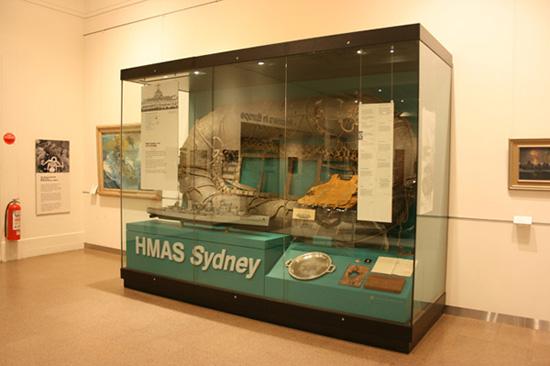HMAS Sydney
The discovery of HMAS Sydney
The recent reported discoveries of the wrecks of HMAS Sydney and the German raider Kormoran off the coast of Western Australia have fulfilled the hopes of many people who for years have grieved, waited and wondered about exactly what happened to these two ill-fated naval ships.
The sinking of the Sydney is the most terrible loss ever suffered by the Royal Australian Navy. It occurred on 19 November 1941 after a sudden and disastrous battle with the Kormoran. None of Sydney's complement of 645 men survived. The Kormoran was also sunk, and 80 of its crew died. 317 survivors of the Kormoran's crew were picked up in the days following the battle.
With the deaths of all on board the Australian cruiser, the only accounts of the action are from some of the Kormoran's survivors. These circumstances have led to the circulation of many rumours, accusations and conspiracy theories. Perhaps the physical evidence recently found on the ocean floor might put some of these to rest.
At the Australian War Memorial the loss of life on the Sydney is commemorated primarily through the Memorial's Roll of Honour. The Australians who died are remembered alongside more than 102,000 others who died in the Australian armed forces in time of war.
In its collections, the Memorial holds records, artefacts, photographs and works of art that help tell the story of HMAS Sydney and its final battle. The most haunting of these is a life raft, known as a "Carley float", which was recovered empty 300 km off Carnarvon a week after Sydney was sunk. The Carley float it is so far the only piece of the Sydney recovered after the battle.

It was presented to the Memorial in 1942 and has rarely been off display since then. It can be seen today in the Second World War gallery, along with other records and artefacts associated with the Sydney, the Kormoran and the men who served in them.
HMAS Sydney and the Roll of Honour
When HMAS Sydney was sunk on 19 November 1941, all 645 men on board died. However, a ship's complement usually consists of a mixture of personnel. In the case of HMAS Sydney in November 1941, 629 of these men were serving with the Royal Australian Navy, and their deaths are commemorated on the Memorial's Roll of Honour under the name of their ship. A further six men on board were serving with the Royal Australian Air Force, their job being to fly and maintain the ship's aircraft. They are commemorated on the Roll under the name of their squadron, No. 9 Squadron RAAF.
There were four civilians, men who staffed the ship's canteen. Three of these were Australian and they appear on the Memorial's Commemorative Roll. This is a form of commemoration which can include Australian civilians who have died as a result of wars or warlike operations in which Australians have been on active service. The fourth canteen worker was British.
There were six men on board who were serving with the British Royal Navy. Their names are commemorated elsewhere as they were not serving as members of the Australian Military Forces.
Further reading:
- The Memorial Encyclopedia entry on HMAS Sydney.
- Wikipedia articles on HMAS Sydney and the HSK Kormoran (which show locations for the recent discoveries).
- Finding Sydney Foundation
My thanks to Anne-Marie Condé, Wendy Gadd and Jennie Norberry who developed all the content for this post. Mal
